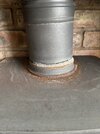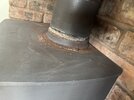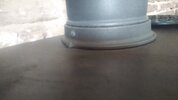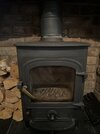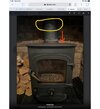- Joined
- 8 Oct 2024
- Messages
- 2
- Reaction score
- 0
- Country

Hi all,
I’ve recently moved into a new house and the log burner has this on the join - it feels likely we are missing something - I thought it may be the rope you see on the inside of the door but should there be a cover as well? I don’t have any clue when it comes to log burners so any help is appreciated!
Thanks
I’ve recently moved into a new house and the log burner has this on the join - it feels likely we are missing something - I thought it may be the rope you see on the inside of the door but should there be a cover as well? I don’t have any clue when it comes to log burners so any help is appreciated!
Thanks

